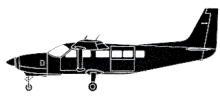Incident Overview

Description
The pilot was planning to fly the aircraft from a private unlicensed airfield near Limerick City, Ireland to Gloucestershire Airport in the United Kingdom. The aircraft had been parked in the open overnight adjacent to the hangar. The pilot reported that the grass runway surface was wet but not unduly soft or frozen, with occasional spots of water-logging and mud. The wind was light and from an easterly direction making runway 15 the preferred runway direction for departure. Following the removal of engine and pitot covers, the engine was started and the aircraft positioned away from the hangar to an area at the beginning of runway 15. Following extension of full flap to permit proper inspection of the flap mechanisms, the engine was shut down and a pre-flight inspection was carried out. Engine start was completed and included a check of the propeller control to ensure the pitch changing mechanism was functioning correctly. Takeoff checks were completed from memory and the takeoff run was commenced on runway 15. With takeoff power applied the aircraft appeared to accelerate normally. The pilot used a soft field technique where aft pressure was applied to the control yoke and the nose-wheel was lifted just off the runway surface as soon as possible. With the aircraft well established in the takeoff run, the pilot felt that the aircraft was not accelerating as expected. As a reserve of take-off power was available, he applied maximum available engine power, however there appeared to be no appreciable increase in acceleration. The pilot realised that continuing the take-off in these circumstances was not safe and that stopping in the remaining runway length would likely result in an overrun. As he was familiar with the airfield he was also aware that any overrun would result in the aircraft entering the ditch at the end of the runway. With few options remaining at that point, the pilot attempted to overfly the ditch at the departure end of the runway with the intention of stopping the aircraft in the adjacent field. As it passed over the ditch, the aircraft made contact with fence posts embedded in the hedge sustaining significant damage to the left elevator and fuselage underside. The aircraft came to rest at the far boundary of the adjacent field, incurring damage to the engine and propeller. The pilot shut down the engine and was able to evacuate the aircraft unaided. Probable Cause: The flaps remaining selected in the FULL position following pre-flight checks, which resulted in increased drag and reduced aircraft acceleration during the take-off roll. Contributory Cause: The decision to abandon the take-off was made too late in the take-off roll.
Primary Cause
Flap selection in FULL position during takeoff roll, leading to increased drag and reduced aircraft acceleration.Flap selection in FULL position during takeoff roll, leading to increased drag and reduced aircraft acceleration.Share on:



